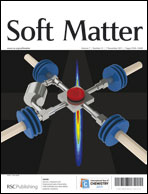Facile photopatterning of polyfluorene for patterned neuronal networks†
Abstract
In this paper, we demonstrated a facile photopatterning method that uses photocrosslinkable polyfluorene to fabricate micro-sized photopatterns on transparent indium tin oxide substrate for neuronal


 Please wait while we load your content...
Please wait while we load your content...